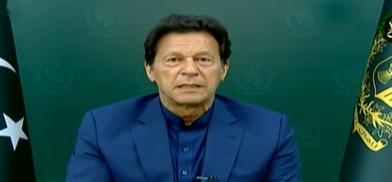PM Imran Khan’s growth delusion hides a painful reality for Pakistan
In a tweet on Friday, Pakistan Prime Minister Khan said the Gross Domestic Product (GDP) growth for the last three years was 5.37 percent and congratulated his own government for “substantial job creation” and “rise in per capita income.”

In a tweet on Friday, Pakistan Prime Minister Khan said the Gross Domestic Product (GDP) growth for the last three years was 5.37 percent and congratulated his own government for “substantial job creation” and “rise in per capita income.” Ironically, it came weeks after he had warned that they may have to approach the International Monetary Fund (IMF) again if the country failed to increase exports.
For the last six months, Khan’s government is involved in tough negotiations for a bailout package to stabilize its dwindling foreign reserves with the IMF, which in return has been seeking fiscal and structural reforms—many of them are painful, politically, for the government to implement. Yet, the government never tires of putting a spin on the growth figures in order to create a fallacious feel-good feeling despite a damaging trade deficit.
The government revised its GDP figure for 2020-21, from earlier reported 3.94 percent to now 5.4 percent by changing the base year from 2005-06 to 2015-16. “This is the 2nd highest growth in [the] last 14 years,” Planning Minister Asad Umer wrote on Twitter. However what he failed to put out was that in December last year the inflation rate was 12.3 percent—the highest in the last 22 months.
“Our economic reforms [are] success recognized internationally. Bloomberg predicted Pakistan will sustain [a] high growth trajectory and employment,” Prime Minister Imran Khan said in a tweet. However, back in November last year, Shaukat Tareen, prime minister’s special advisor for finance, warned against a high growth rate.
“That’s is going to damaging for our economy,” Tareen warned last year while admitting the issue of overheating in the economy. [Read More]
In November last year, the country’s current account deficit was $1.9 billion—the highest it recorded in the last 40 months. In the same month, the trade deficit was a whopping $5.1 billion —the highest for a single month—as import bills touched $8 billion.
Khan had acknowledged then that the ballooning trade deficit forced the government to approach the IMF for the revival of the IMF bailout package. He said, “Although our exports are increasing, they are still less than our imports.” [Read more]
In the last fiscal year, FY 21, the trade deficit widened by 32.9 percent, posting around $30 billion difference between imports and exports. In the first half of the current fiscal year, FY22, July-December 2021, the trade deficit crossed a whopping 24 billion—registering an increase of almost 100 percent from $12.35 billion recorded in the same period a year before.
If the trend goes like this, Pakistan is well on the path to recording its highest-ever trade deficit this financial year. The last time it recorded the highest trade deficit was in FY18, around $37 billion.
So far remittances from nonresident Pakistanis have helped manage the trade deficit. However, in the long run, the trade deficit may become too wide to be balanced by remittances alone.
(SAM)








Post a Comment